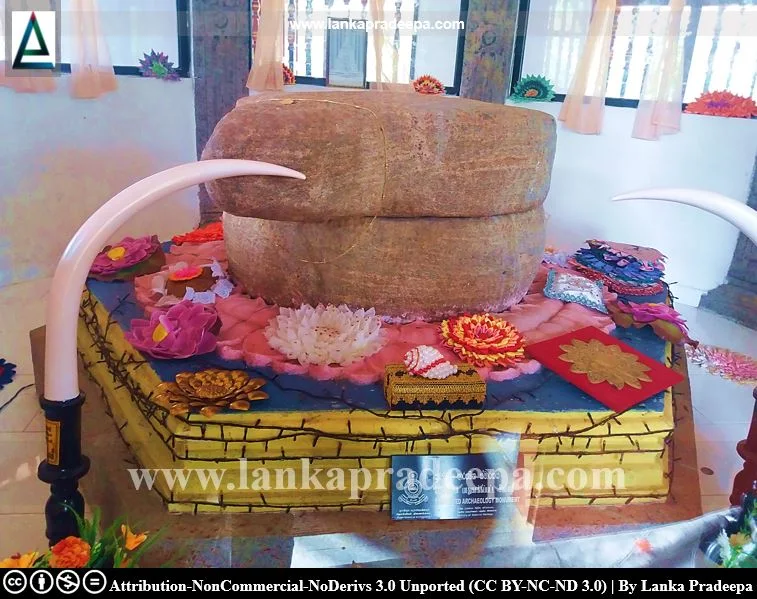
Delgamuwa Raja Maha Viharaya (Sinhala: දෙල්ගමුව රජ මහා විහාරය) is a historic Buddhist temple located in the village of Delgamuwa in Ratnapura District, Sri Lanka. This temple has obtained a special place in Sri Lankan history as it provided protection for the Tooth Relic of the Buddha for over 40 years (Abeyawardana, 2002).
History
After the death of King Bhuvanekabahu VII (1521–1551 A.D.) and the designation of Dharmapala as the successor, the political stability of the country became unstable with the activities of the Portuguese. At the time, Hiripitiye Diyawadana Nilame was the noble person who entrusted with the custody of the Tooth Relic (Pieris, 1920). One night he experienced a strange dream in which he was warned about the security of the Tooth Relic. Distressed by the dream, he secretly moved the relic from Kotte to Sitawaka and presented it to King Mayadunna [(1521–1581 A.D.) Pieris, 1920]. For the purpose of further protection, the Tooth Relic was moved to Delgamuwa Viharaya where it was hidden in a Kurahan Gala (maize grinding stone).
In 1560, the Portuguese claimed to have captured the Tooth Relic and carried it to Goa, India (Hocart, 1931). Dom Constantino de Braganza, a Portuguese viceroy who obtained the alleged Tooth Relic, had pounded the relic in a brazen mortar and threw it into the sea (Hocart, 1931; Pieris, 1920). However, the Tooth Relic captured by the Portuguese was an imitation carried by Veediya Bandara (Pieris, 1920).
Konappu Bandara who recorded a successful victory over the Portuguese at Danthure, near Kandy in 1592 ascended the throne as King Vimaladharmasuriya I (1592–1604 A.D). He brought the sacred Tooth Relic from the Delgamuwa temple in Sabaragamuwa Province to safeguard it from the Portuguese army. Due to the initiative of Devanagala Ratnalankara Thera and Hiripitiye Diyawadana Nilame, the relic was placed in a two-storied temple built in the neighbourhood of the Royal Palace at Senkadagala (present Kandy) during the period 1593-1595 (Abeywardana, 2004; Pieris, 1920; Seneviratna & Polk, 1992).
A Protected Site
The grinding stone which had been used to conceal the Tooth Relic of the Buddha, the ancient temple and the library of Delgamu Raja Maha Viharaya in the Kuruwita Divisional Secretary’s Division are archaeological protected monuments, declared by a government gazette notification published on 22 November 2002.


References
1) Abeyawardana, H.A.P., 2002. Heritage of Sabaragamuwa: Major natural, cultural and historic sites. Sabaragamuwa Development Bank and The Central Bank of Sri Lanka. ISBN: 955-575-077-7. p.10.
2) Abeywardana, H.A.P., 2004. Heritage of Kandurata: Major natural, cultural and historic sites. Colombo: The Central Bank of Sri Lanka. p.10.
3) Hocart, A.M. ed., 1931. Memoirs of the Archaeological Survey of Ceylon IV: The Temple of the Tooth in Kandy. Messrs. Luzac & Co. pp.3-4.
4) Pieris, P.E., 1920. Ceylon and the Portuguese, 1505-1658. American Mission Ceylon Press. Telippalai. pp.76, 86, 142.
5) Seneviratna, A. and Polk, B., 1992. Buddhist monastic architecture in Sri Lanka: the woodland shrines. Abhinav Publications. p.133.
6) The Gazette of the Democratic Socialist Republic of Sri Lanka. No: 1264. 22 November 2002.

